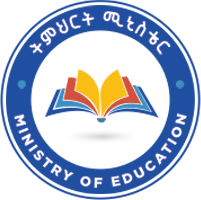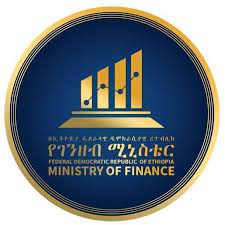Components
Component Two: Digital Government and Connectivity
The objective of this component is to develop the capacity of the GoE to deliver digital services, and to crowd in private sector investments to improve regional and domestic connectivity infrastructure, to connect public institutions and educational institutions to broadband internet. It will build upon the market opening measures supported in Component 1 to stimulate private-sector-led investment to expand the geographic coverage of broadband networks, to better serve government institutions, businesses and citizens across the country. This component will support the following activities:
2.1: Digital government and COVID-19 response
This sub-component will help build the GoE’s capacity to deliver digital services, and to respond to the COVID19 pandemic, including by (a) developing a Government ePortal accessible to citizens and firms1 ; (b) improving government facilities for remote working; (v) designing an overall enterprise architecture for IT within government; (d) providing technical assistance to strengthen cybersecurity technical and operational capabilities in government and reinforcing the (CERT; and (e) building the digital skills of government officials. The COVID-19 pandemic has heightened the awareness of the value and necessity of delivering government services online and eliminating the need for queueing or face-to-face contact when making and receiving payments or providing information. The ePortal would be developed using principles of human-centered design and in line with global standards on universal accessibility. Activities to be conducted under this sub-component will focus on ‘quick wins’ in the field of eGovernment, a digital response to COVID-19 and training of senior Government officials in digital literacy:
a) Among the ‘quick wins’ for digital government are the development of a consolidated portal for Government ministries, departments and agencies (MDAs) and the digitization of selected eServices. Although, the Ministry of Finance (MoF) maintains an up-to-date website (www.mofed.gov.et), this is the exception among government MDAs, and there is no single point of entry for citizens or small and medium-sized enterprises (SMEs). One of the 22 priority projects set out in the Digital Ethiopia 2025 strategy document is to “Employ a human centered approach to designing portals, helping maximize uptake and utilization” with the MInT taking the lead. Personal and private data will be protected in compliance with forthcoming data protection legislation and cybersecurity best practices will be deployed to support the resilience of the portal and eServices from attacks and breaches.
The COVID-19 pandemic has had a profound impact on working practices within the GoE, emptying offices and forcing reliance on online working. This activity will seek to address government requirements arising from the pandemic, such as improved facilities for secure remote working, and the installation of up to 50 Communications Rooms1 in key ministries and other locations, to be chosen by the GoE. Internet connectivity to support the functioning of the Communications Rooms would be provided under sub- component 2.2. Secure connectivity to government networks via the personal devices of officials working remotely will also be addressed.
c) The project will set the foundations for digital government, in particular by designing an overall enterprise architecture for further development of IT systems within government, indicating which functions may be centralized and which may be distributed to line ministries and the regional/local government. This will include the definition of Ethiopia’s cybersecurity technical architecture across government systems.
d) The project will strengthen cybersecurity technical and operational capacity for threat intelligence, prevention, incident response and recovery as well as upgrading cybersecurity skills in government, in particular by providing TA and training to the government on anticipating and responding to cybersecurity attacks and breaches and on strengthening the capabilities, platforms and applications of the government CERT. The TA will build on the recommendations of a proposed cybersecurity maturity model assessment for Ethiopia.
e) This activity aims to support the government in developing and implementing a digital capacity building program for government officials, aligned with the Digital Skills Country Action Plan2., developed with TA from the WB. Capacity building to train government officials to use digital services effectively and securely for coordination and service delivery can be a game changer for digital transformation of government. This will involve also supporting capacity building of government officials to design and implement climate mitigation and adaptation measures for broadband infrastructure and e-Government infrastructure.
2.3: Connecting Selected Educational Institutions to Broadband
As an extension of the drive to all Government MDAs, this sub-component will focus on connecting selected educational institutions to high-speed internet services. Ethiopian universities and schools currently lack sufficient connectivity to enable adequate access to the best global information and research collaboration. Where connectivity is available, it is often
low-quality, is at low speeds, ia unreliable and covers only a limited number of buildings on university or school campuses, or it is provided by satellite links which are slower and more expensive than fiber. In the first phase of the project, this will include universities, CTE, research institutions and TVETs, with the aim of nationwide coverage. In a second phase, should additional financing be made available at a later date, the project could also connect 200 selected secondary schools, and eventually aim to connect all secondary schools in the country. Connecting educational institutions with broadband has become particularly critical as a result of the COVID-19 pandemic which saw schools closed at the end of March 2020. This has obliged them to experiment with a blend of online and face-to-face tuition. Improving connectivity for educational institutions is thus critical to empowering the next generation of digital leaders for the private sector and the government.
This subcomponent will be implemented in partnership with EthERNet, Ethiopia’s National Research and Education Network (NREN), part of the Ministry of Science and Higher Education (MoSHE). The organization currently connects some 36 universities, out of a total of around 200 universities. Further, of the roughly 1,500 TVETs in Ethiopia, only 25 are currently connected. Under the project, it is anticipated to connect an additional 30 universities and 40 TVETs, as well as upgrade data centers and routers. As a member of the UbuntuNet Alliance, EthERNet can access low-cost international connectivity, academic content, and training opportunities as part of the Africa Connect 3 initiative, which is supported by the EU. This will allow EthERNet and the universities in the consortium to access low-cost connectivity, open educational resources (OER) online content as well as training.





